|
by Shawna Puustinen Primary multiage, Riverbend School Artful Teaching has giving me so much to think about. I have spent the last decade integrating art into my language arts, science and social studies units. An art project here, a drawing there, a model of a neighborhood made out of milk cartons. That’s art, right? I guess it never occurred to me that I could use art to teach social studies, math, science and language arts. I would love to say that this realization resulted in a complete overhaul of my teaching, in which every lesson was embedded with artful learning. Of course, I can’t say that. I can say that I have embedded artful learning routines into my day (well, not everyday). I am slowly but surely building my understanding and gaining the skills needed to be an artful teacher. Our school has adopted the One School, One Book initiative. For the past two years our amazing PTO has picked one book and purchased a copy for every student, staff and employee in our building. The idea being that we will all read the book and be able to talk about it. Teachers read the book in their classrooms, students take their copies home and the school hosts some school community events and activities. This year, Arctic Aesop’s Fables by Susi Fowler was the book chosen. Each classroom picked one of the fables from the book to design a bulletin board. What started out as a small cooperative art project ballooned into a full-fledged unit of study. We looked at characters, settings, problems, solutions, and the moral of each story. We then compared the two stories, looking for similarities and differences. We had lots of great discussion about friendship and good sportsmanship. On what I thought was going to be the last day before I was to leave on vacation, the students worked together in small groups to create tableaus for their favorite parts from one of the two stories.
On Monday I boarded a plane for a wonderful week in the Florida sun, completely forgetting that months before I had promised the kids that we would do a puppet show. Guess who didn’t forget. My daughter, who just happens to be one of my second graders this year. Ugh! Aren’t there rules about having your own kids in your class? Just kidding. It has been a blast having my daughter in my class. So, that’s how it happened. I got back from vacation and my daughter reminded me and the rest of our class that I had promised a puppet show. Clay, sticks and imagination… I am going to start this section by confessing that I hate puppetry. Nothing makes me feel sillier than interacting with a puppet. I have tried...really. I have spent countless uncomfortable minutes having conversations with Impulsive Puppy and Slow Down Snail. It always leaves me feeling...weird. So, I knew that trying to teach a puppetry unit was going to stretch me in many ways. I started the unit with dot sticker popsicle stick puppets. The kids each got to draw eyes and mouth on their dot sticker and put it on a tongue depressor. Most of the kids were pretty excited, but a few were less than excited to be holding a tongue depressor puppet (oh, how I could relate to them). With great enthusiasm, I demonstrated arm positioning, puppet posture, large puppet movements (walking, running, going up and down stairs, lying down, getting up, etc), wrist movements (yes/no, looking up/down/around, reading, etc.), puppet emotions, and voice projection. The same few less-than-excited puppeteers actively tried to sabotage our puppetry lessons. Their poor tongue dispenser puppets experienced great head trauma while being repeatedly banged against tables and the floor. They refused to participate in voicing activities and their “I am too cool for this” attitudes were starting to spread. I was ready to call it.
As soon as the popsicle sticks were attached the kids were becoming their puppets. A few kids, were working together creating quick puppet skits. I still had one very reluctant artist. He was about as excited about creating his puppet as he had been about using a puppet. The kids got to pick one puppet to leave at school for the puppet show, and then take the other puppet home. One girl came back the next week with more than 10 little clay creatures she had made at home. It was neat to see how her creatures evolved from simple to very detailed and sophisticated.
During a morning meeting time, we watched two videos of people putting on shadow puppet plays. After watching the videos, I used the “See, Think, Wonder” thinking routine to help my kids process what they had seen. I was very impressed with what they observed. Many picked up on the techniques the actors were using to make their characters come to life. They noticed things like how voices changed from one character to the next. How the puppeteers used multiple sticks to move different parts of the puppets. They noticed the props changed from one scene to the next. They wondered about what would happen next in the stories and how the puppeteers made their puppets. As I watched and listened to them share with each other, I saw engagement, inclusion, success. The playing field was level. Each one of them, regardless to their background, learning needs, age, grade, etc., was able to share something that they saw or thought or wondered. Since the tableau process is very familiar to my students, I used the same process to get them started with planning their puppet skits. The groups did their thinking and sharing just like in tableau. When they were ready to plan, I had them go to tables to brainstorm what they would need to make their scenes works:
Tomorrow is our big production. The kids haven’t even finished the scripts, but I think it will be okay. I told them that I would video each of their skits and then we could all watch them together on the big screen in the room. All but one seemed really excited about this. As I am sitting here writing this, I can’t help but smile. These kids have done some amazing work in the past few weeks. It goes way beyond close reads, reading comprehension and craft projects. They connected to a story, stripped it to its bare bones, extracted the underlying message and then rewrote it in their own words. They worked cooperatively in groups. They explored new and old art forms. They created. They problem solved. They observed. They asked questions and found answers. They supported one another. They tried new things. They took risks. They stepped outside of their comfort zones. They failed. They persevered. It would be hard not to be proud of the work they have done. So tomorrow, no matter what happens, I will stand and applaud each of them with genuine admiration.
And it all started with one fable, from one book.
0 Comments
By Maura Selenak Kindergarten Teacher, Harborview School It’s January and I’m sitting at the carpet with a group of kindergartners. “Why do you think the character in the story said that? What was she thinking?” Hands shoot into the air- “I’ve built a snowman before!” “My mom read this book to me before.” “Can I go to the bathroom?” They are eager to share their experiences and what they know to be true. However, urging a group of five and six year olds to perspective take-- whether we’re reading a book, or I’m asking a child to think about his friend’s point of view when they’re having a disagreement-- can be hard. Perspective taking is the ability to take the perspectives of others and apply it to your interactions with them. It is something that we work on over the course of the entire year in kindergarten. When my Art Lab group chose to experiment with the Step Inside Artful Thinking Routine, I was intimidated. Choose a person, object or element in a piece of artwork, and step inside that point of view. Consider: what can the person/object perceive or feel? What might the person/thing know about or believe? What might the person/thing care about? I worried that this thinking routine would be too abstract for my kindergartners, or that they wouldn’t be interested. Boy was I wrong. This routine was so successful on the first try that I came back to it again and again for the remainder of the year. Each time I was blown away by the students’ insights, responses, and eagerness to share. What did this thinking routine look like in the classroom? Snapshot 1: Our Day-Old Chick For this thinking routine, we used an image of a chick that had just hatched in our classroom. Some of the students’ thinking was recorded on a poster during the thinking routine: Snapshot 2: Friendship
This thinking routine happened toward the end of a read aloud of Timothy Goes to School by Rosemary Wells. In the story, Timothy is excited to go to school but when he gets there, Claude tells him he is wearing the wrong thing day after day. We paused at an image of Timothy and I asked students to “Step Inside” and pretend that they were Timothy. Some of the students’ thinking was recorded on a poster during the thinking routine. |
ArtStoriesA collection of JSD teachers' arts integration classroom experiences Categories
All
|
|
|
Artful Teaching is a collaborative project of the Juneau School District, University of Alaska Southeast, and the Juneau Arts and Humanities Council.
|
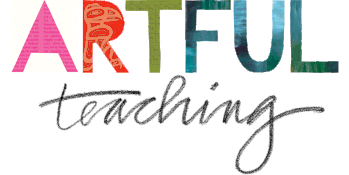
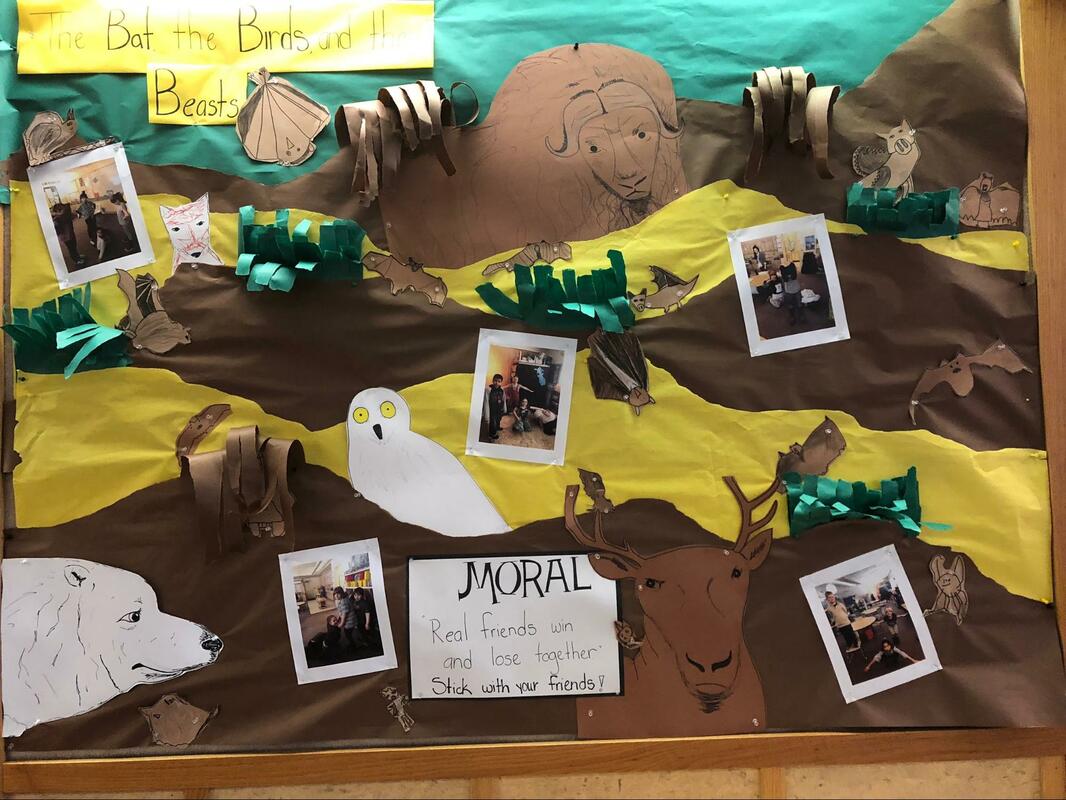
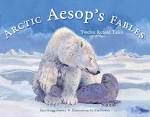
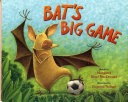
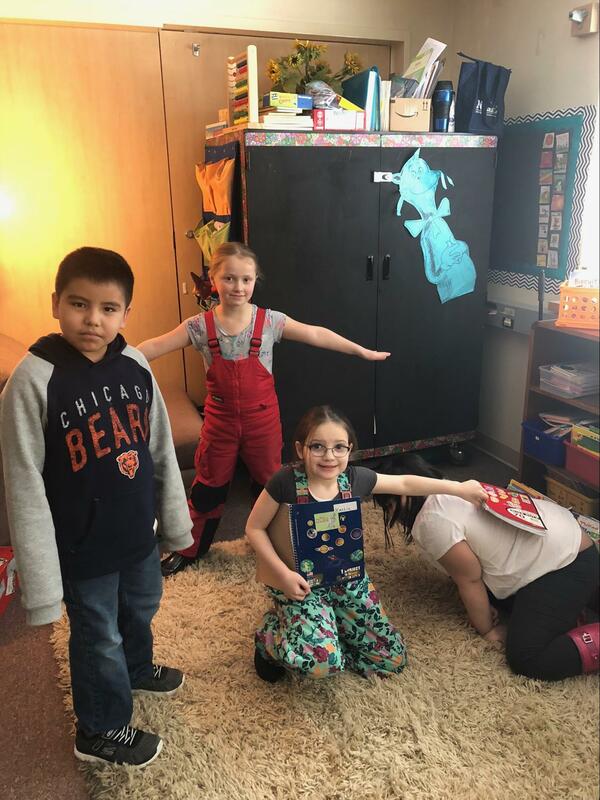
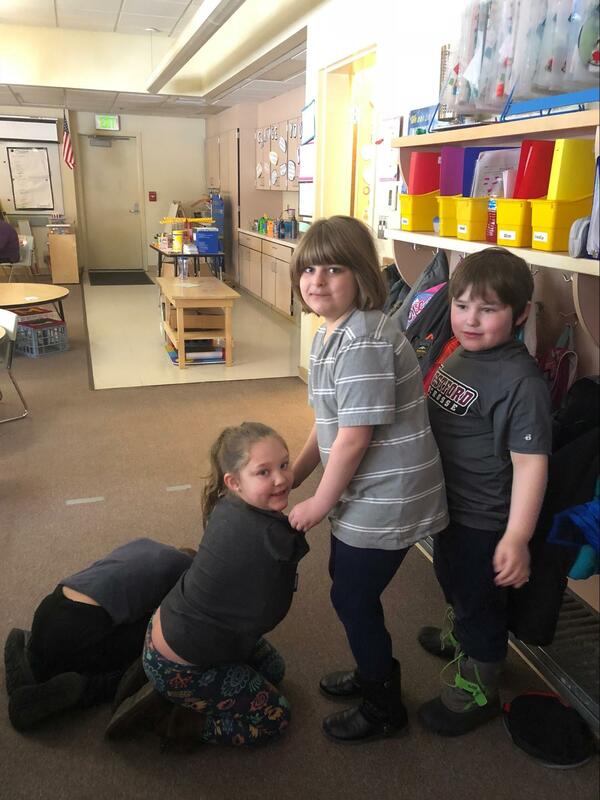
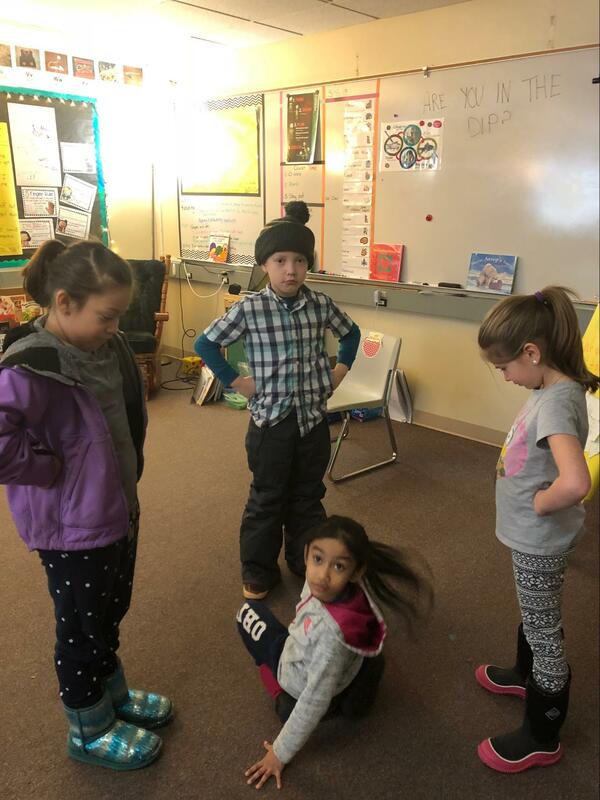
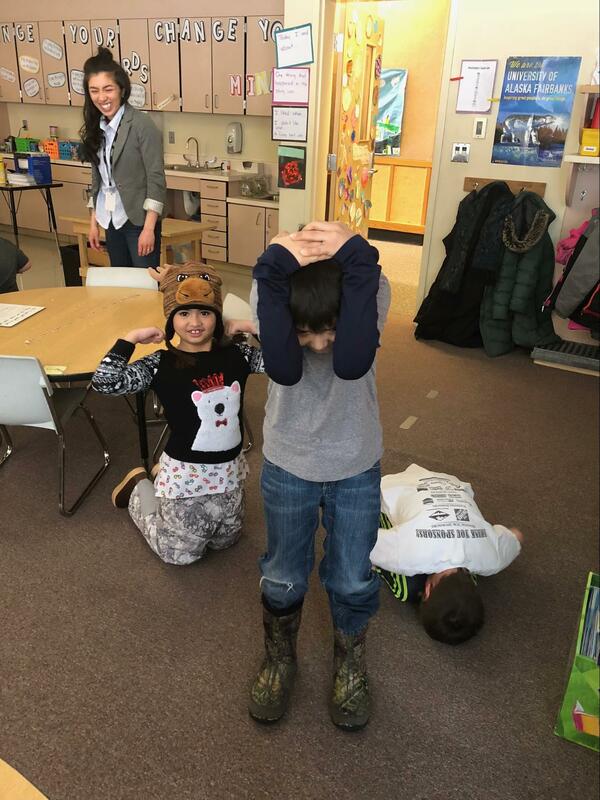
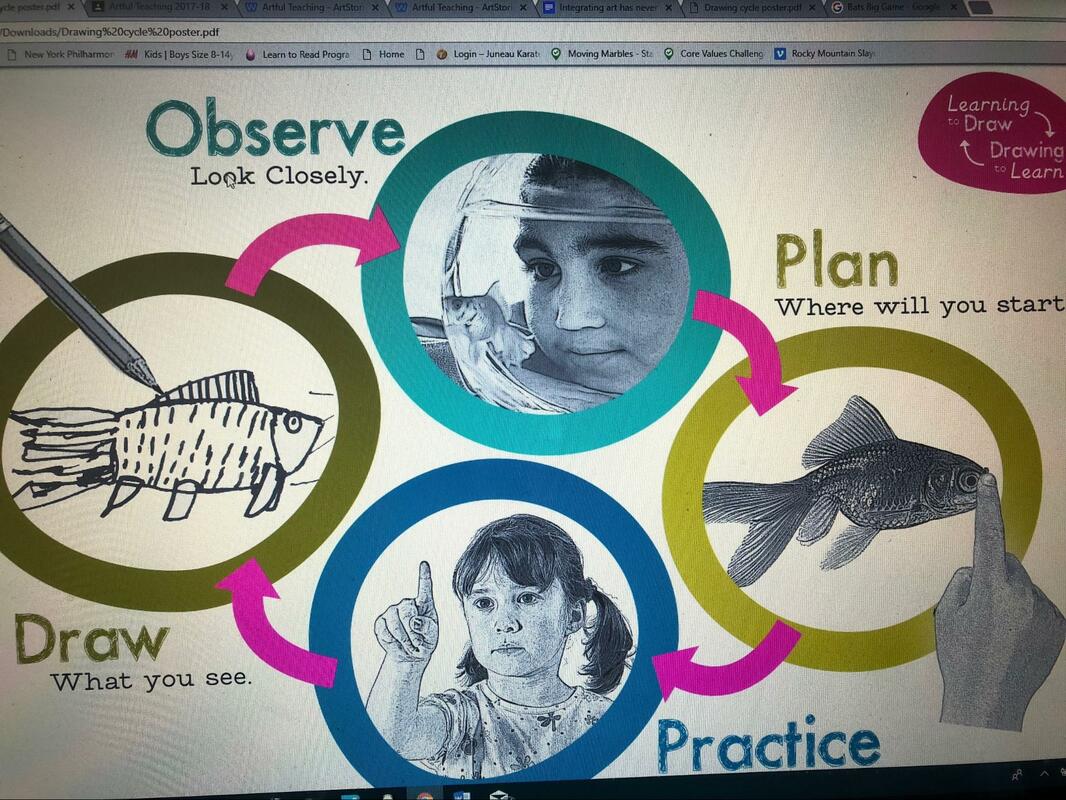
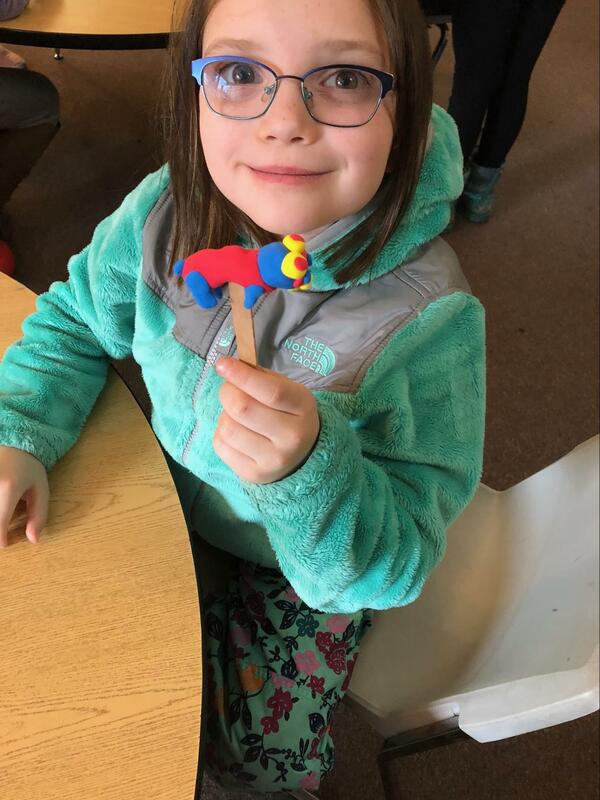
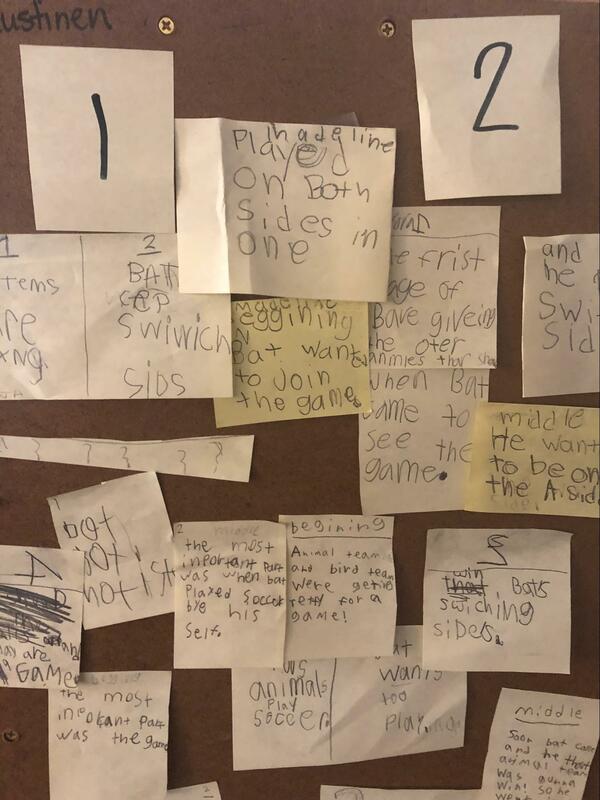
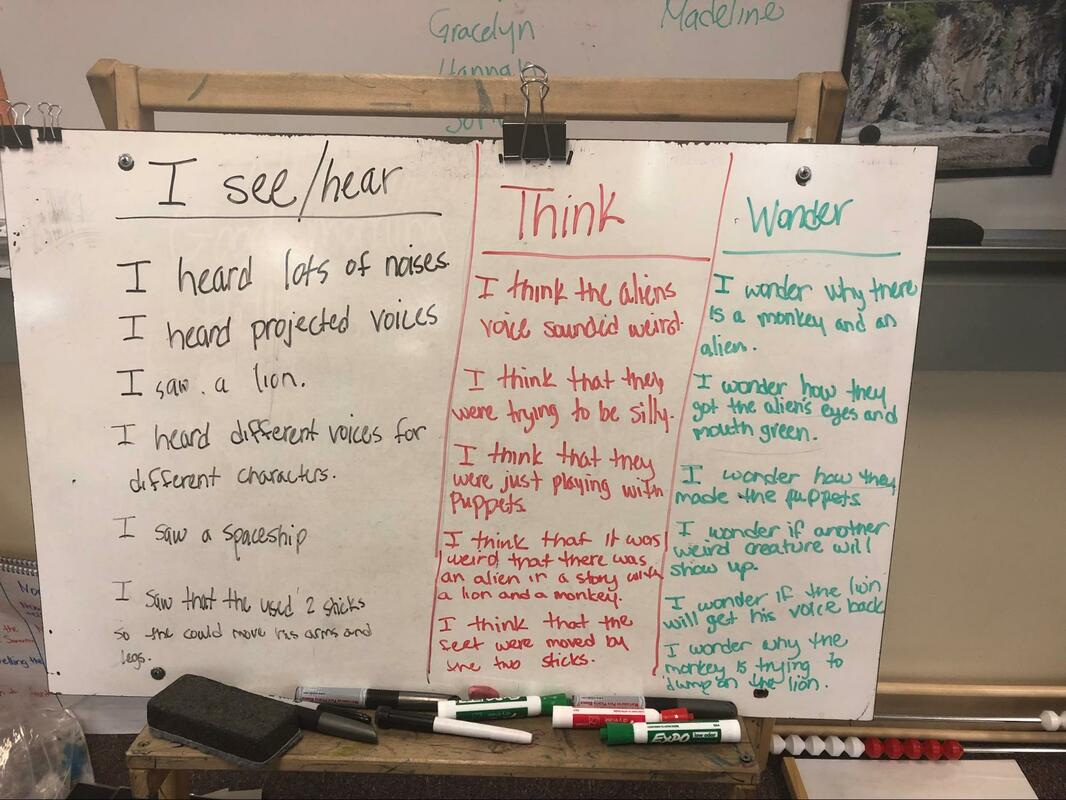
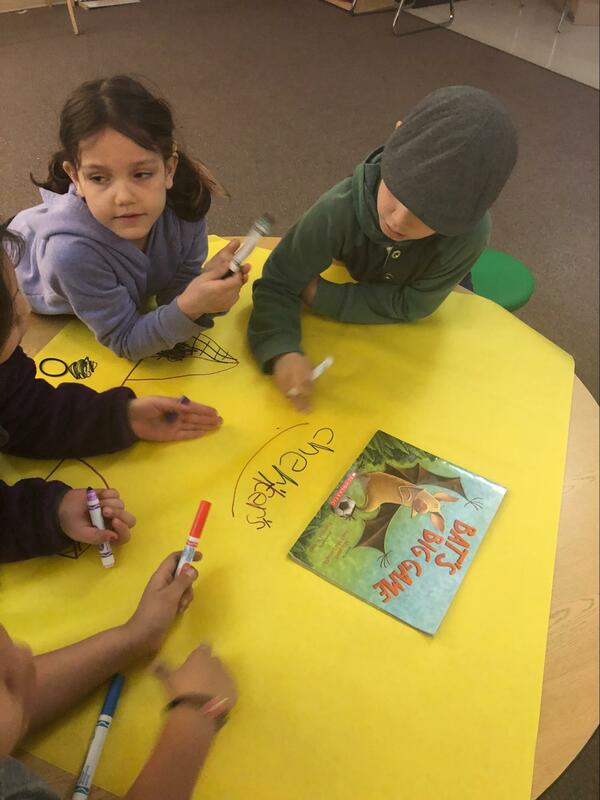
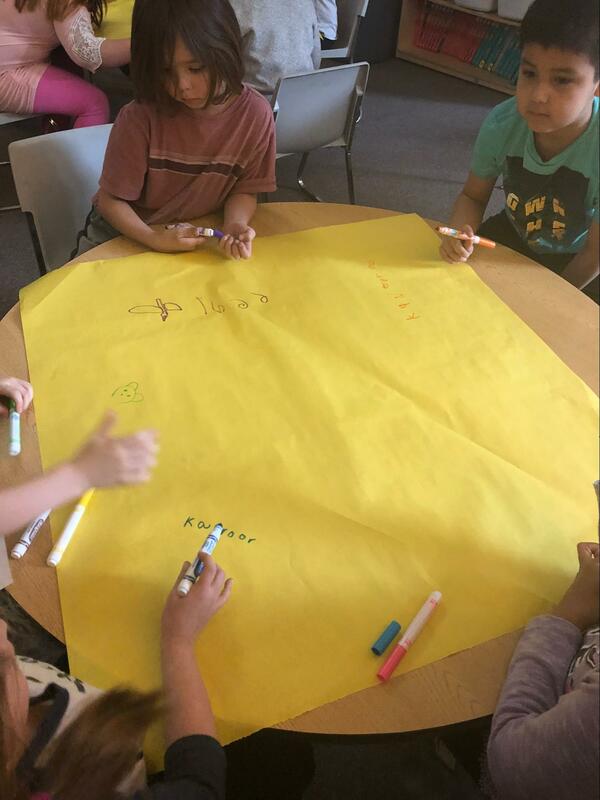
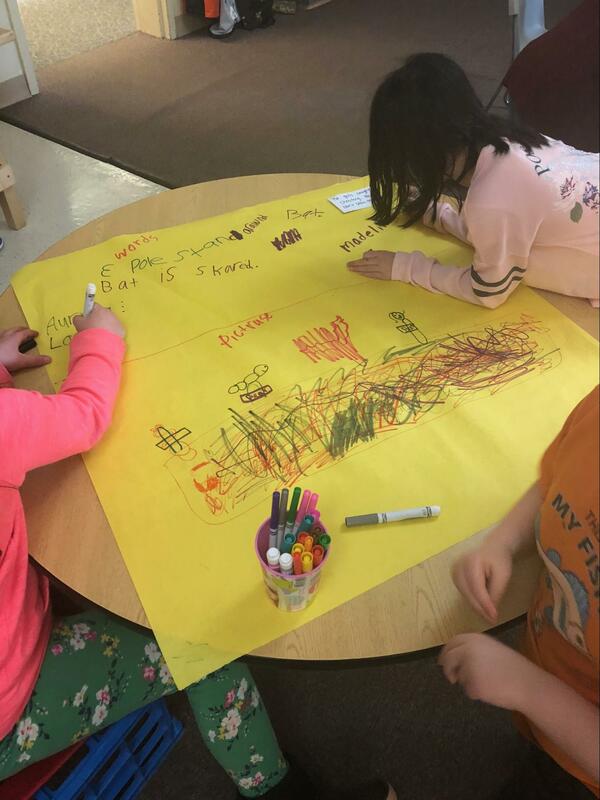
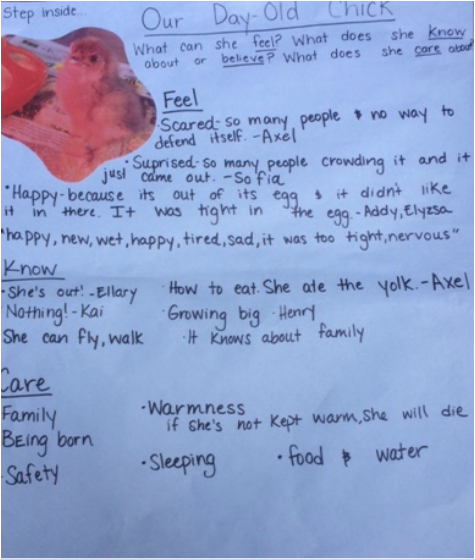
 RSS Feed
RSS Feed